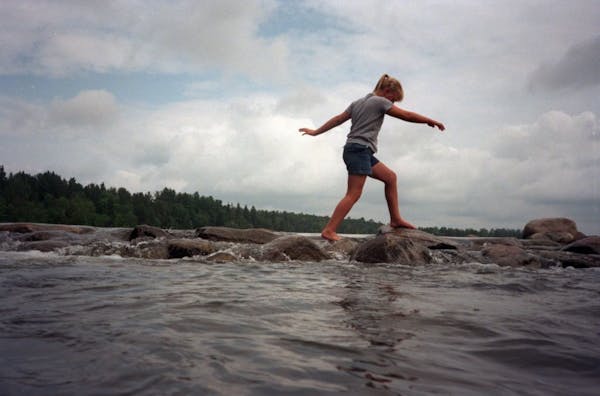Toilets are backing up. Bike trails are too rough to ride. Roofs are leaking and the walk to the headwaters of the Mississippi River is worn out from all those tennis shoes.
The Minnesota Department of Natural Resources (DNR) for the first time took a hard look at the all the state parks, trails, buildings, boat launches and monitoring wells it manages — and found that they need $342 million worth of work to get them all back into shape. This year Gov. Mark Dayton is suggesting a total of $72.5 million in bonding for the DNR, about half of which — $33 million — would go to repairs and renovations.
It's the largest bonding request the DNR has ever made, and if the Legislature agrees, it would be by far the largest it's ever received.
"It's a big lift," DNR Commissioner Tom Landwehr said during a news conference Monday afternoon at Itasca State Park. "But we have to start trying, otherwise we will really have to start paying the piper by knocking down buildings and starting from scratch."
The department's inventory turned up 737 out of 2,700 buildings that are in "crisis" condition; 100 of 620 miles of paved trails that need work; 201 campsites that need to be refurbished, and $10 million in water and sewer work at Itasca State Park, which this year celebrates its 125th birthday.
This is also the first time, Landwehr said, that the DNR has devised a long-term plan for annual maintenance — which would require $98 million a year for the next decade to fix what's broken and to maintain the rest.
For too long, he said, the agency has been at the mercy of the vagaries of the state budget process.
"Partly it's the DNR's own fault," Landwehr said. "We never cataloged our needs. This was a wake-up call for us."
But part of the problem is that the DNR's sources of funding have changed dramatically as well.
Years ago, the agency received half its money from the state's general fund, and the rest from fees, licensing and other sources that were specifically designated for certain things.
But today, only a fifth of its $450 million annual budget comes from the general fund, and the rest from the state's 2008 Legacy Amendment, lottery money, licenses, and similar special sources. That means the majority of its funds are dedicated — legacy grants, for example, must be used for new projects and acquisitions, not for fixing leaky roofs. Meanwhile, park attendance continues to rise. Last year it increased 14 percent.
Maintenance and other construction projects rely on bonding, Landwehr said, but the largest amount the agency has ever received for bonding was $17 million in 2011.
Landwehr conceded that the $33 million in maintenance Dayton is requesting this year is just the start, and will cover only a third of annual maintenance costs. But DNR officials have been making their case to legislators for some time. Last summer they took a busload of them up to Itasca State Park to give them a tour.
The state's bonding decisions are not likely to be completed until the end of the legislative session in late May. And the DNR is not the only one looking for money. Dayton has requested a total of $1.4 billion for 100 projects around the state, arguing that a healthy state treasury and low interest rates make this a good time to borrow money.
But bonding bills are unique in requiring a three-fifths supermajority vote of the House and Senate, requiring bipartisan cooperation that is rare on high-profile pieces of legislation.
Josephine Marcotty • 612-673-7394
Friday's prep sports results
Tigers hand Twins season-worst 5th straight loss. Wenceel Pérez hits go-ahead single in 9th
Juan Soto's 3-run homer in 5-run 7th inning lifts Yankees over Rays 5-3
Braves' Travis d'Arnaud hits first 3 HRs of season, including go-ahead slam, in 8-3 win over Rangers

